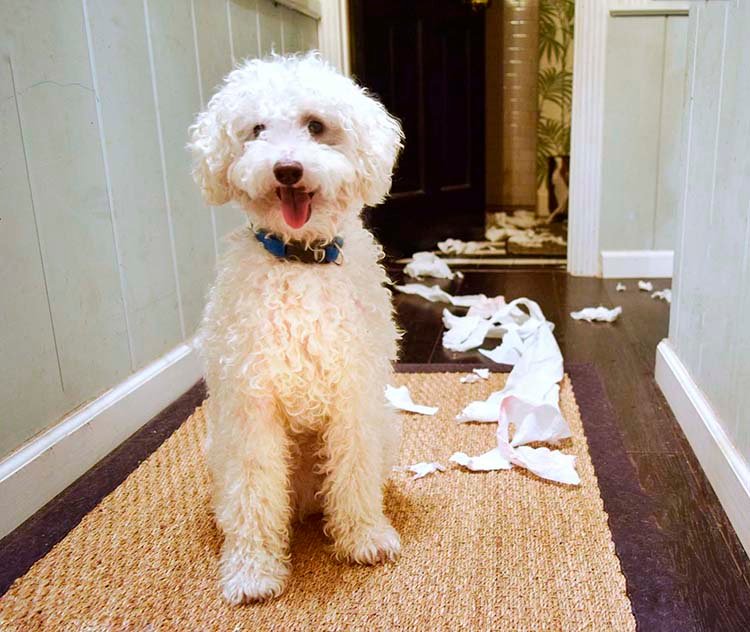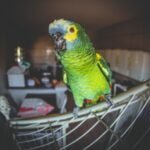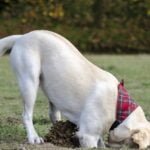Dogs are known for their curious and sometimes mischievous nature. This inherent curiosity, combined with a keen sense of smell and taste, can lead them to ingest items that are far from being food. To effectively address the issue of a dog eating inedible things, it’s essential to grasp the underlying reasons behind this behavior.
Understanding Why Dogs Eat Non-Food Items
Dogs explore the world through their mouths: Dogs, especially puppies, use their mouths to investigate and interact with their surroundings. Chewing and nibbling on objects is a natural part of their sensory exploration.
- Pica behavior: Pica is a condition characterized by the consumption of non-nutritive, non-food substances. Some dogs may develop pica, leading them to eat items like rocks, plastic, or paper.
- Boredom and anxiety: Dogs left alone for extended periods or those lacking mental stimulation may resort to chewing and eating objects out of boredom or stress.
- Nutritional deficiencies: In some cases, dogs with certain nutrient deficiencies may seek out unconventional sources of nutrition, such as eating dirt or wood.
- Attention-seeking behavior: Dogs are social animals and may eat inedible things to gain attention or as a response to neglect.
- Sensory appeal: Certain items may have appealing textures, scents, or flavors that attract dogs, even if they aren’t safe to consume.
Common triggers and behaviors to watch out for:
- Sudden changes in behavior, such as increased restlessness or agitation.
- Frequent vomiting or attempts to vomit.
- Refusal to eat or drink.
- Abdominal discomfort or bloating.
- Pawing at the mouth or throat.
- Diarrhea or constipation.
Understanding these underlying reasons can help you better prevent and address instances of a dog eating inedible things, ensuring your pet’s safety and well-being.
Spotting Signs of Ingestion: Is Your Dog in Danger?
Timely recognition of the signs of ingestion of inedible objects is crucial for your dog’s health and well-being. Knowing what to look for can help you assess the situation and take appropriate action to mitigate potential risks. Here are some key indicators to be aware of:
Identifying the red flags of an inedible object consumption:
- Behavioral Changes: Pay close attention to any sudden changes in your dog’s behavior. Restlessness, anxiety, or agitation can signal discomfort.
- Vomiting: Frequent episodes of vomiting, especially if they contain foreign materials or undigested food, are a clear sign of gastrointestinal distress.
- Refusal to Eat or Drink: If your dog refuses food or water, it may indicate a problem in the digestive tract.
- Abdominal Discomfort: Watch for signs of abdominal pain, such as whining, panting, or a hunched posture.
- Pawing at the Mouth or Throat: If your dog appears to be pawing at their mouth or throat and making retching movements, it may suggest an obstruction.
- Diarrhea or Constipation: Changes in bowel habits, including diarrhea or constipation, can be associated with ingested foreign objects.
- Lethargy: A lack of energy or enthusiasm can be a general indicator that something is amiss with your dog’s health.
The importance of early detection for your pet’s well-being:
Early detection of ingestion-related issues is critical. When your dog consumes an inedible object, it can lead to various complications, including intestinal blockages, perforations, or toxic reactions. If left untreated, these conditions can be life-threatening.
If you notice any of the above signs or suspect that your dog has ingested something they shouldn’t have, don’t hesitate to seek veterinary care promptly. Timely intervention can often prevent more severe complications and ensure a better outcome for your furry companion.
Immediate Steps to Take
When you suspect that your dog has ingested an inedible object, it’s crucial to take immediate action to protect their health. Here are the initial steps you should follow to provide first aid:
Quick actions to safeguard your dog’s health:
- Assess the Situation: Start by determining what your dog has ingested and how much. This information will be valuable when you contact your veterinarian.
- Do Not Attempt Home Remedies Without Guidance: Inducing vomiting or administering substances like hydrogen peroxide should only be done under the direct supervision of a veterinarian. Incorrect dosages or methods can be harmful.
- Secure the Area: If you know what your dog ate and it’s toxic (e.g., certain plants, chemicals), try to secure the remaining items to prevent further ingestion.
- Observe Your Dog: Keep a close eye on your dog’s behavior and vital signs. Note any changes and share them with the vet.
- Transport Safely: If advised by your veterinarian, transport your dog to the clinic safely. Use a pet carrier or leash to prevent them from further ingesting or choking on foreign objects during the journey.
- Keep Records: Maintain records of the incident, including the time of ingestion, the type of object, and any symptoms observed. This information will be valuable for your vet’s assessment.
Remember that time is of the essence in cases of ingestion, so prompt communication with a veterinary professional is crucial. In some cases, they may advise you to monitor your dog at home or to bring them in for immediate treatment. The specific actions required will depend on the nature of the ingested object and your dog’s overall health.
Preventing Dog from Eating Inedible Things
Stopping a dog from eating inedible things requires a combination of training, management, and addressing the underlying causes of the behavior. Here are steps to help you prevent your dog from engaging in this potentially dangerous behavior:
Training and Supervision:
- Basic Commands: Teach your dog basic obedience commands like “leave it,” “drop it,” and “stay.” These commands can be lifesavers in preventing your dog from picking up or ingesting dangerous items.
- Supervision: Always supervise your dog when they are in an environment where they might encounter inedible objects. This is particularly important during walks and outdoor playtime.
- Provide Appropriate Toys and Mental Stimulation:
- Interactive Toys: Offer a variety of safe, interactive toys that can keep your dog mentally stimulated. Puzzle toys and treat-dispensing toys are excellent choices to engage their minds.
- Regular Exercise: Ensure your dog gets enough physical exercise and mental stimulation. A tired dog is less likely to engage in destructive behaviors out of boredom.
Environmental Management:
- Pet-Proof Your Home: Dog-proof your living space by removing or securing items that could be tempting or harmful if ingested. This includes small objects, toxic plants, and chemicals.
- Use Baby Gates: Restrict access to certain areas of your home using baby gates to prevent your dog from getting into trouble.
Behavioral Modification:
- Consult a Professional: If the behavior persists or worsens, consult a professional dog trainer or behaviorist. They can assess your dog’s behavior and provide a tailored training plan.
- Desensitization: Gradually expose your dog to the objects they tend to ingest in a controlled and safe manner to reduce their curiosity.
Behavioral Therapy:
- Consider a Behavioral Specialist: In severe cases or when the behavior is deeply ingrained, consult with a veterinary behaviorist who can offer advanced behavioral therapy techniques.
It may take time to see significant improvements, and it’s essential to remain calm and persistent in your efforts. Always prioritize your dog’s safety and well-being by taking preventive measures and seeking professional help when needed.







